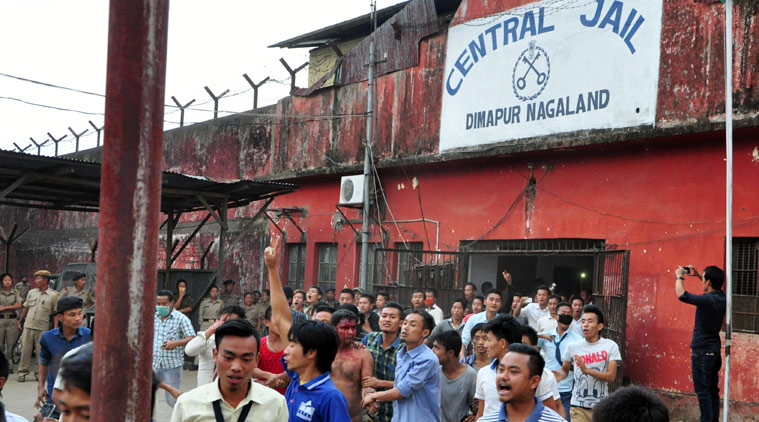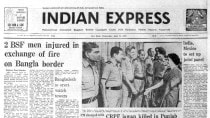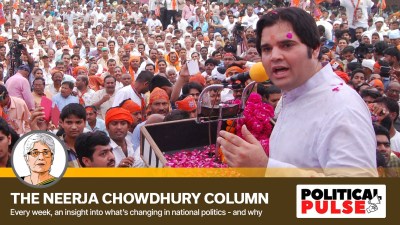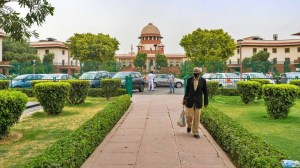- India
- International
Dimapur snapshots
Why did a lynch mob feel compelled to take photographs as it killed?
 If the spectators at the Waco lynching of 1916 joked about being at a ‘barbecue’, this lynching had the fury of an exorcism.
If the spectators at the Waco lynching of 1916 joked about being at a ‘barbecue’, this lynching had the fury of an exorcism.
In Dimapur on March 4, a crowd of people gathered around a dying man and held up their cell phones. The man had been dragged out of the city’s central jail, stripped, bound by the waist, and as he was being battered to death, they took pictures. Syed Sharif Khan was believed to be an illegal Bangladeshi immigrant, though it is now found that he was not, and he had been detained on charges of rape, though the Nagaland government’s report to the Union home ministry claims there had been none. The public spectacle of his death was perhaps meant to replicate the shame inflicted by his imagined crime. The pictures kept a record of the shame. Some of the photographs escaped into social media the next day, and they may still be circulating as grisly mementos. Because for those in the crowd, it seems it was not enough to kill; the killing had to be viewed.
It appears implausible, this pairing of sudden violence and the cool photographic recording of it, of atavistic brutality and the technology required to capture the images. But it is not new. In 1916, Jesse Washington, a black man in Waco, Texas, was accused of killing the wife of a cotton planter and burnt alive by a mob. A local professional photographer took pictures of the event which were then sold as postcards. One of the crowd sent his parents a postcard bearing the words, “This is the barbecue we had last night. My picture is to the left with a cross over it, your son Joe.” It shows a row of spectators at the back, and two people in the foreground, posing next to the charred stump of the body. They have the swagger of hunters standing over a trophy. Postcards were only part of the memorabilia floating around after Washington’s death — those willing to pay more could acquire a length of the chain used to hang him and other more macabre remains.
Lynchings in the American south were regularly photographed and, in some cases, even simulated through audio-visual media after the event was over. It was as if this public act of killing could not be complete without the images and mementos that proliferated afterwards. For lynching has never been about violence alone — as Amy Louise Wood observes in her book, Lynching and Spectacle, “even that violence and those deaths were representational”. Around the turn of the 20th century, Wood goes on to say, the most sensational lynchings took place in fast urbanising areas. These were the places where the old social order was most visibly threatened, as blacks and whites competed for jobs and emerging urban spaces threw them together in new ways. The social and political anxieties of the southern white population gave rise to the spectre of the “black brute rapist” who violated white women and by extension, the “purity” of white society. Lynchings enacted a triumph over these social fears and reinstated challenged hierarchies.
But what of the lynching crowd at Dimapur? What triumph did the photographs commemorate? Nagaland is the result of its own peculiar history and inhabits a very different context; the ethnic tensions of the hill state may not be comparable to the racial hatred of southern America, or the hierarchies it produced. But curious resonances surfaced in the lynching at Dimapur.
To begin with, the city has its own spectres. The most audible strain of Naga identity, at least, has long defined itself in terms of ethnic purity, which must be protected against “outsiders”. Over time, anxieties about outsiders have coalesced around the figure of the “illegal Bangladeshi immigrant”, a phrase often contracted to the clipped, impersonal acronym, “IBI”. Local lore frequently casts him as a predatory creature, stealthily making inroads in Naga society by taking over jobs and land, marrying local women. From the 1980s, there had been reports of how marriages between Naga women and IBIs had given rise to a new population of “Sumias”. Local newspapers continue to raise alarm about the “ballooning population of immigrants” being a “big threat to the survival of the local populace”. On Gandhi Jayanti in 2012, the Naga Council, Dimapur, introduced a pledge to “socially and economically boycott” IBIs. The stakes were high, no less than the “erosion” of Naga identity by a “tidal wave of alien culture”.

Many fears seem to converge in the person of the IBI — hybridity, economic dispossession and eventually, cultural extinction. In Syed Sharif Khan, a Bengali-speaking Muslim who had married a local woman and was accused of raping a Naga girl, Dimapur found the perfect focus for them. Did the crowd that bore down on him believe they were expelling these fears? If the spectators at Waco joked about being at a “barbecue”, this lynching had the fury of an exorcism. The procession that started at the central jail was bound for the clock tower, a city landmark, where the accused would be mounted on the rails. This was to be no ordinary killing; the images it left behind were important. There would also have to be proof that this ritual expulsion had taken place. To the cell phone wielders that day, the photographs may tell that story. But to horrified viewers who were not part of the crowd, certain social pathologies were played out and taken to their tragic conclusion in the Dimapur lynching. The photographs tell that story too.
ipsita.chakravarty@expressindia.com
EXPRESS OPINION
Apr 25: Latest News
- 01
- 02
- 03
- 04
- 05










































